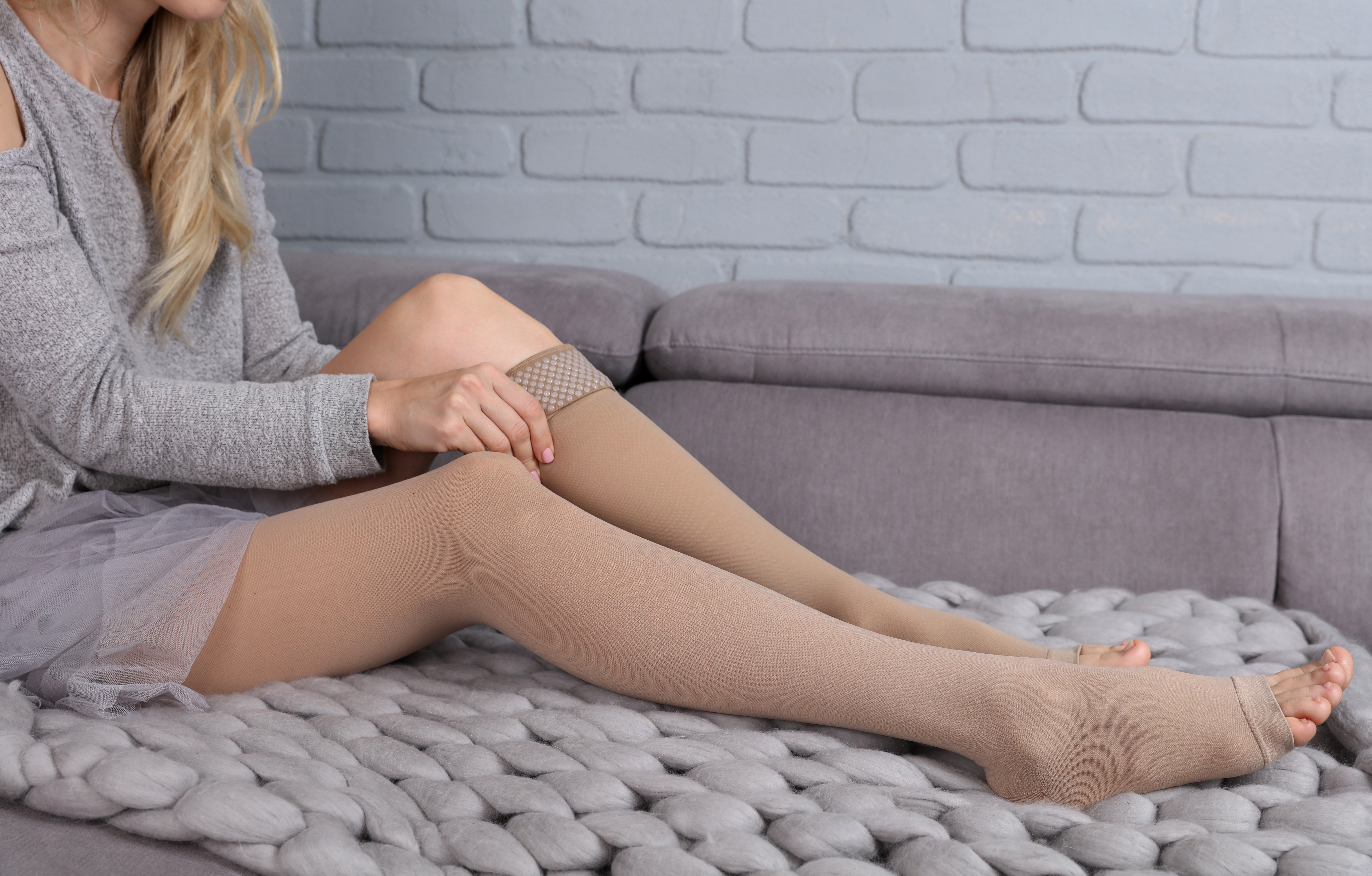Have you been looking into getting a vein treatment for varicose or spider veins? If you have varicose or spider veins, consider learning about the benefits of sclerotherapy. If you have, it is important to consider the time of year to schedule your vein procedure. The healing process for your vein treatment can be more comfortable if you plan it during the winter months.
Read on for a few reasons to consider getting sclerotherapy in winter before it heats up for summer in Franklin, Tennessee.
What is Sclerotherapy?
Sclerotherapy treatments remove unsightly spider veins, varicose veins, and other types of vascular lesions visible on the skin’s surface. With this procedure, a physician injects a chemical solution into these vessels, which causes them to close up permanently. The treated vessels collapse and fade into the surrounding skin, leaving behind a smooth, unblemished surface.
Sclerotherapy has been used for over 100 years to treat spider veins and varicose veins with great success rates. Vascular surgeons perform sclerotherapy on an outpatient basis and most people can go back to their usual activities immediately afterward. Usually, the entire procedure takes about an hour.
There are several types of sclerotherapy treatments available to suit individual needs. This works well for spider veins; however, it will not work as well for larger, more dangerous varicose veins.
The three main forms of this treatment include foam sclerotherapy, microfoam sclerotherapy, and ultrasound-assisted sclerotherapy.
Foam Sclerotherapy
With foam sclerotherapy, your surgeon will apply a solution to the surface of your skin through a small needle, similar to an acupuncture needle. The tiny bubbles or foam created by the solution make it easier for your physician to see where he or she injects the sclerotherapy solution. This allows your doctor to treat smaller veins that are not very visible on the surface of your skin.
Microfoam Sclerotherapy
With microfoam sclerotherapy, your vein surgeon will inject a solution into the varicose veins through a slightly larger needle. The liquid creates smaller bubbles when injected into the skin. This allows your doctor to target veins that are still on the surface of your skin but not easily visible.
Ultrasound-assisted Sclerotherapy
With ultrasound-assisted sclerotherapy, a machine delivers a high-frequency sound wave to the area of skin where your physician is injecting the solution. The sound waves vibrate and create bubbles in the veins, which makes it easier for your doctor to inject the solution without missing any of those targeted veins.
The ultrasound enables your physician see your veins clearly and make sure all of your targeted veins receive effective treatment. Typically, our Tennessee vein surgeons use this type of sclerotherapy treatment on the larger varicose veins.
Why Should I Get Sclerotherapy in Winter?
Sclerotherapy isn’t a painful procedure, but it does require some discomfort to complete. Patients can experience side effects from sclerotherapy that include pain, aching, itching, or a burning sensation. Warmer weather can aggravate these symptoms due to your skin’s increased exposure to the sun and heat. As a result, you’ll likely want to schedule your sclerotherapy procedure during the winter months if possible.
Compression Socks

After a sclerotherapy treatment, a pressure wrap will be applied immediately and kept in place for about two days. When the wrap is removed, pressure will still be necessary on and around the treated area. That is where compression socks come into play. Compression socks help with bruising and pain that can result from sclerotherapy. It is advisable to wear them for two to four weeks, or what is prescribed by your doctor.
During hot, summer months in Tennessee, it may be uncomfortable to wear additional clothing. They will also be harder to hide unless you don’t plan on wearing shorts or swimwear. Winter is the perfect time to heal from sclerotherapy as the stockings are easy to hide and can provide extra warmth you would have needed anyway. In some cases, these stockings can be incorporated into your cold-weather outfits.
Healing Time After Sclerotherapy
After your treatment, your doctor will advise you to limit the amount of activity and stress you put on your body. Exerting yourself too early can reverse the progress of your treatment. If you don’t allow your body time to heal, you may experience vein dilation that leads to blood clots or other unsatisfactory results.
People are generally more active during the summer months, and you wouldn’t be able to participate in any strenuous activity. Winter is a better time for sclerotherapy treatment. Spending some time relaxing inside while it’s cold outside will give your body time to heal correctly. Save the hillside trail for the warmer months with your new and improved legs in shorts!
Skin Discoloration
Exposing your skin to UV radiation can cause varicose veins as the cells are damaged over time. After a sclerotherapy treatment, sun exposure can disrupt healing further.
UV rays can increase blood vessel inflammation and cause the veins to swell. The rays can create skin discoloration in the treated areas if they are not given time to heal before exposure. UV radiation also damages the DNA of a cell, and this weakens blood vessels and can create pigmentation changes.
Sunscreen, hats, long-sleeved shirts, and pants are your best bet for protecting your legs. During winter, you’ll more than likely be wearing long clothing already and your skin will be protected. You will most likely be staying inside all day or at least more often in the winter.
With colder months upon us (and shorter, less damaging days of UV ray exposure), it’s the perfect time to start sclerotherapy treatment.
Bruising
Beyond sun damage, winter is a better time for treatment because any bruising that may occur can be covered easily and comfortably with clothing. It can be difficult to cover up a dark bruise or mark on your skin during the summer. You might miss out on pool parties, hot weather hikes, or any activity that would require clothing to keep you cool.
The cooler weather allows for some flexibility as far as what you’ll be wearing regularly. It’s much easier to cover up with long pants and long-sleeved items. The process of sclerotherapy is lengthy enough as it is, and having an added layer of clothing over the treated areas can make your time off from work or other activities less complicated.
Following the procedure, you may experience bruising, swelling, and skin discoloration from the products used during treatment. Skin stains may last up to a couple of months, and swelling may take up to 6 months to entirely disappear. You may experience discomfort or additional bruising if you are not complying with your doctor’s instructions. It is important to follow the exact protocol given to you to make sure all veins in the leg are targeted and treated correctly with the least amount of complications.
The Worst Times to Get Sclerotherapy
To prevent complications, it is important to consider the time of year you choose for your sclerotherapy treatment along with other life factors. The following are not ideal times to undergo a sclerotherapy procedure:
Treatment During The Summer
During summertime, your body is more likely to form blood clots on its own if there’s massive vein damage due to heat and inflammation. If you were to develop a blood clot during the sclerotherapy treatment, it could be life-threatening or lead to more vein damage and complications.
Treatment During Pregnancy
Sclerotherapy is generally not safe for women who are pregnant, and pregnancy should be avoided during treatment. There have been very rare cases where veins were damaged during pregnancy and led to other complications such as bleeding and blood clots, which could lead to serious health issues or death. While it is true that many women develop spider veins or their existing veins worsen, treatment must wait until after.
Treatment During Sickness
Whenever possible, it is always best to avoid any type of invasive procedure when you’re sick or have an active infection. If you are ill, your immune system is weaker and your veins are more likely to be compromised. By undergoing sclerotherapy when you’re sick, you expose yourself to further complications and increase the risk of infection in the vein.
Schedule Sclerotherapy in Tennessee
If you schedule your procedure early enough, your body will have time to make a full recovery, unbeknownst to anyone else. You won’t want to spend the summer hot and hiding in long clothing. Getting sclerotherapy in the winter months will ensure your skin heals enough in time for summer fun. The board-certified vascular surgeons at the Vein Centre can treat your veins and give you the legs you want next summer! Give us a call and schedule an appointment at one of our convenient locations in Belle Meade, Franklin, and Mt. Juliet, Tennessee.



